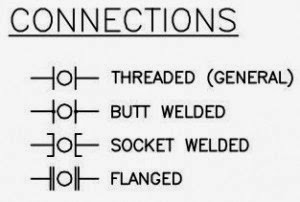The Rankine cycle
Although the Carnot cycle is the most efficient cycle, its work ratio is low. Further, there are practical difficulties in following it.
Consider the Carnot cycle for steam as shown:
2 to 3: heat is supplied at constant temperature and pressure.
3 to 4: the vapour expands isentropically from the high pressure and temperature to the low pressure. In doing so, it does work on the surroundings, which is the purpose of the cycle.
4 to 1: the vapour, which is wet at 4, has to be cooled to state point 1 such that isentropic compression from 1 will return the vapour to its original state at 2. From 2 the cycle is repeated.
The four processes are physically very different from each other and they each require particular equipment:
- The heat supply, 2-3, can be made in a boiler.
- The work output, 3-4, can be obtained by expanding vapour thorough a turbine.
- The vapour is condensed, 4-1, in a condenser,
- and to raise the pressure of the wet vapour, 1-2, requires a pump or compressor.
At state 1 the steam is wet but it is difficult to stop condensation at this point and the compress it just to state 2. It is more convenient to allow the condensation process to proceed to completion, as shown:
The working fluid is water at the new state point 3, and it can be conveniently pumped to boiler pressure at state 5. The pump has much smaller dimensions than it would have if it had to pump a wet vapour, the compression process is carried out more efficiently, and the equipment required is simpler and less expensive.
This ideal cycle, which is more suitable as a criterion for actual steam cycles than the Carnot cycle, is called the Rankine cycle.
Rankine cycle with superheat
The average temperature at which heat is supplied in the boiler can be increased by superheating the steam. Usually the dry saturated steam from the boiler drum is passed through a second bank of smaller bore tubes within the boiler. This bank is situated such that it is heated by the hot gases from the furnace until the steam reaches the required temperature.
The Rankine cycle with superheat includes a steam receiver which can receive steam from other boilers. In modern plants a receiver is used with one boiler and is placed between the boiler and the turbine. Since the quantity of feedwater varies with different demands on the boiler, it is necessary to provide a storage of condensate between the condensate and boiler feed pumps. This storage may be either a surge tank or hot well.
The reheat cycle
It is desirable to increase the average temperature at which heat is supplied to the steam, and also to keep the steam as dry as possible in the lower pressure stages of the turbine.
The wetness at exhaust should be no greater than 10%. High boiler pressures are required for high efficiency, but that expansion in one stage can result in exhaust steam which is wet.
This is a condition which is improved by superheating the steam. The exhaust steam condition can be improved most effectively by reheating the steam, the expansions being carried out in two stages.
1´-2 represents isentropic expansion in the high-pressure turbine, and 2´-3 represents isentropic expansion in the low-pressure turbine. The steam is reheated at constant pressure in process 2-2´. The reheat can be carried out by returning the steam to the boiler, and passing it through a special bank of tubes. Alternatively, the reheat may take place in a separate reheater situated near the turbine; this arrangement reduces the amount of pipe work required.
The regenerative cycle
In order to achieve the Carnot efficiency it is necessary to supply and reject heat at single fixed temperatures. One method of doing this, and at the same time having a work ratio comparable to the Rankine cycle, is by raising the feedwater to the saturation temperature corresponding to the boiler pressure before it enters the boiler.
This method is not a practical proposition but this regenerative cycle has an efficiency equal to the Carnot cycle, since the heat supplied and rejected externally is done at constant temperature.
However, the Rankine efficiency can be improved upon in practice by bleeding off some of the steam at an intermediate pressure during the expansion, and mixing this steam with feedwater which has been pumped to the same pressure.
This mixing process is carried out in a open feed heater. The steam expands from condition 5 through the turbine. At the pressure corresponding to point 6, a quantity of steam, is bled off for feed heating purposes. The rest of the steam completes the expansion and is exhausted at state 7. This amount of steam is then condensed and pumped to the same pressure as the bleed steam. The bleed steam and the feedwater are mixed in the feed heater and then being pumped in a second feed pump.
Because of the number of feed pumps required, the heating of the feed water by mixing is dispensed with and closed heaters are used.










